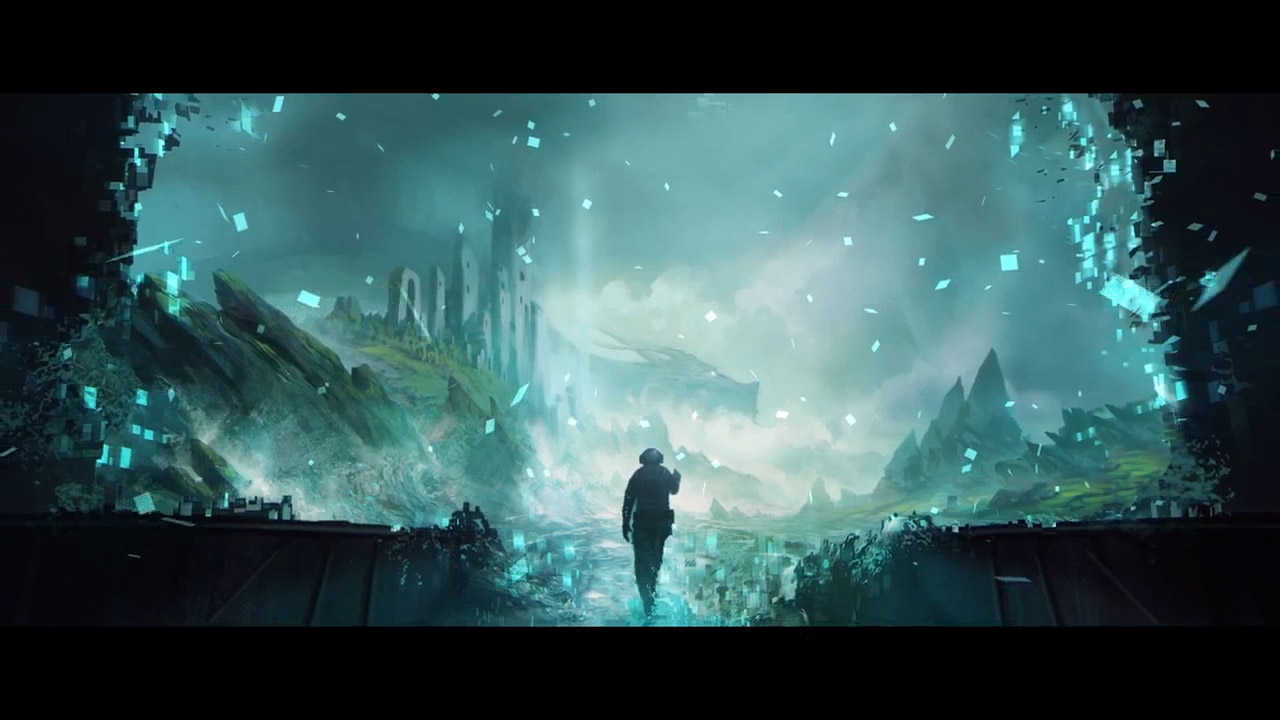Why? Because it enables research, sketching, testing, experimentation, and realization of ideas, and besides it is inspiring, it is very exciting and requires the power of observation on what Sherlock Holmes envied.
It should also be noted that designers of the user interface and user experience (UI/UX) do not deal exclusively with the design. They also take into account the psychological and emotional aspects of the behavior of users on the Internet, envisaging the steps that website visitors will undertake and consider their cognitive abilities.
Only then, on the basis of complete research and conceptualization, they realize their ideas, making the final product - website, web application, online store, digital library, web directory or any other system - primarily highly functional and easy to use.
All this makes the job creative and interesting, but not simple.

Special challenges arise in today's digital world - in the era of expanded and virtual reality, newly created worlds, animated characters, and intelligent machines. New, exciting fields of action are emerging, but the rapid development of technologies and digital trends leads to the increasingly difficult demands placed on web designers.
It is no longer enough to set up a static website and consider the work done (static sites, however, return to the mode, but do not prevail). On the contrary, it takes a lot of time, effort and knowledge, and then pay much attention to implementing new technologies, such as moving elements, interactive, participatory interfaces and many others.
Designers need to learn new skills, improve technical knowledge of work with prototype testing tools, as well as knowledge of information architecture and visual hierarchy.
In the continuation of the article, we will consider what all the areas should be aware of the web designer in order to be in the trend.

SPECIAL VOICE ABILITY
This does not mean that designers should be at the same time, top-class singers. This is a growing use of devices that primarily support voice commands. Statistics show that currently only in America, about 30 million households own such devices, and it is predicted that by 2022, as many as 50 percents of households in the United States will use a primary voice search.
Designing user experiences should keep pace with innovation, and in the coming years, it is expected that vocal commands will become standard or compulsory part of every web designer's work.
Does that mean that designers need to create solutions by the screenless design? Displays, it would say, will not completely disappear, but the approach to using the device changes, and consequently, the user experience changes.

THE MOVE ELEMENTS DESIGN
The effect called parallax is already in use for a long time and is very popular among web designers. As a specific way of launching individual elements on a website stimulated by moving a mouse or scrolling, creating an illusion of depth as the third dimension, it was created with the idea of attracting visitors' attention to the site and increased interaction.
The same goal has other motion graphics that, by moving, rotating or animated visual effects, create the 3D space impression, although it is about 2D objects.
The so-called motion design is most often used when animating characters and objects or creating video games. In this case, through various drawing techniques and 3D modeling, the concept, design, and visualization of final solutions are developed.
Given that animation is an increasingly popular web design element, managing these techniques could be of great value in everyday work.

AUGMENTED REALITY: MAGICALLY REAL
The fields of the so-called augmented reality (AR) have inspired a change in the way of accessing storytelling, even beyond the virtual space. Designers are therefore increasingly trying to imitate the look and feel of physical movement in the space - raising the trend started by parallax effect at a higher level.
The goal is to create human-centered design experiences that affect users' emotional responses. These are usually the so-called immersive user experience, that is, those who engage all the senses and occupy the observer completely, changing the course of his thoughts and influencing his perception of the environment.
Innovative ways to use animation and unique navigation that resemble AR experiences are most commonly seen in marketing campaigns, whereby the use of video and interactive elements further pays attention to the product being advertised.
During the creation of one experience in the expanded reality, as in the text on the Mediator platform, an expert on AR Aidan Wolf explains, the most important elements are:
- way of presentation
- The positioning of objects in space
- time trace
- adaptability to unpredictable situations.
He also recalls the fact that the experience of an expanded reality can work unrealistically and magically, but it must nevertheless be linked to reality and should be matched with the actual life of the user.
If you're still not sure what the AR experience actually means to design, perhaps the best example for this is the Pokémon GO game, which uniquely connects fictitious characters from the video game and the real environment in which players play.
Any such experience should have a certain action, take place like on a movie and look a little like a child's game. However, care must be taken to ensure that the design matches the weather, the season, the place where play, and all elements of the environment that can affect the story.

PERSONALIZED INTELLIGENT INTERFACE
Intuitive, innovative, intelligent - these are the three principles that should be based on the UI/UX design that follows the trends. What does it mean and how to achieve it?
Tools based on artificial intelligence have a growing impact on web design. Their main focus is personalization, that is, the creation of a digital experience that, based on prior knowledge, adapts to the behavior of users and independently changes to allow the highest possible value of web applications.
Artificial intelligence could thus in the future itself create an intelligent user interface that will adapt to its needs, in real time. On the other hand, this would give web designers more space to focus on the so-called emotional UX design, and less on the graphics and site layout.
Orienting user experience in a particular direction while users interact with the product often poses a great challenge. The role of UX designers, in this case, should be narrowly specialized, requiring closer collaboration with graphic designers, developers, and customer support teams.
The key is to identify what is relevant to the user and to remove all unnecessary elements in order to make the interface cleaner, faster and more functional. It is estimated that such an approach can increase the user's personal engagement, which can further lead to an increase in the percentage of conversion.

VIRTUAL REALITY: IMPOSSIBLE IS POSSIBLE
Regardless of the area in which you are designing, you will probably soon begin to create solutions for virtual reality (VR) if you have not already tried it in that field.
There are many examples of the creative use of VR in web design, starting from the creation of virtual websites, through VR applications and movies, to individual customer-based experiences.
To do this, you need a basic understanding of the concept of virtual reality, as well as understanding the possibilities that it provides. Design for the VR is very specific and involves leaving the screen frame and creating a completely new environment. There are also a number of tutorials on the Internet, which help to get to know the matter better.
In one of them, more precisely in the text for the Wired magazine, Matt Sundstrom set five key principles for a successful immersive design:
- Think like a man
- use perspective to your advantage
- Look around, follow the environment
- build prototypes and design models
- Focus on experience.
VR is something that already exists and which at a high speed develops further as a field in which impossible can become possible.
Available are certain tools to create 3D objects with the help of virtual reality equipment, such as VR goggles. One of them is Gravity Sketch, through which hand-drawn sketches can "revive" in virtual space, can be seen, touched, scanned from all sides ... For now, it is estimated that this tool will mostly be used by architects and interior designers, but it is intended for all creators who want to improve in VR design.

WEB DESIGNER = UNICORN?
Based on all of the above, should we conclude that web designers are mythical beings with supernatural powers that will take on unexpected conditions in the future?
Yes, you could say so.
It's not unusual that web designers already call the unicorns, especially those whose work involves a whole range of different phases of website design - from user behavior research, through the development of ideas and linking concepts, to prototype design, testing, and finally to the implementation of the solution.
It can also be said that superhuman efforts are needed to address all trends and all new demands dictated by the market. Because if you are not perfecting and not adjusting your knowledge, you risk becoming a démodé.
On the other hand, if you firmly believe that you can become a unicorn and dedicate yourself to this, you will become a unicorn. Learning new skills and applying your knowledge in practice, constant improvement, and progress in your work, you can become a superhero of web design.
THE CONCLUSION
So, what is the role of web designers in the era of virtual reality?
Redefined.
With the ever-increasing use of AR, VR, and AI techniques, and knowing that we will not live forever in the world of horizontal navigation and drop-down menus, it's clear that the rules are constantly changing, both in the way of presentation, in narrative methods and in interactive design.
The rules actually do not exist.
Everything changes and the question is, just how much someone is ready to learn, improve and adapt skills to the changes that occur.
Follow me on Twitter - @SrdjanKali.




Share the News